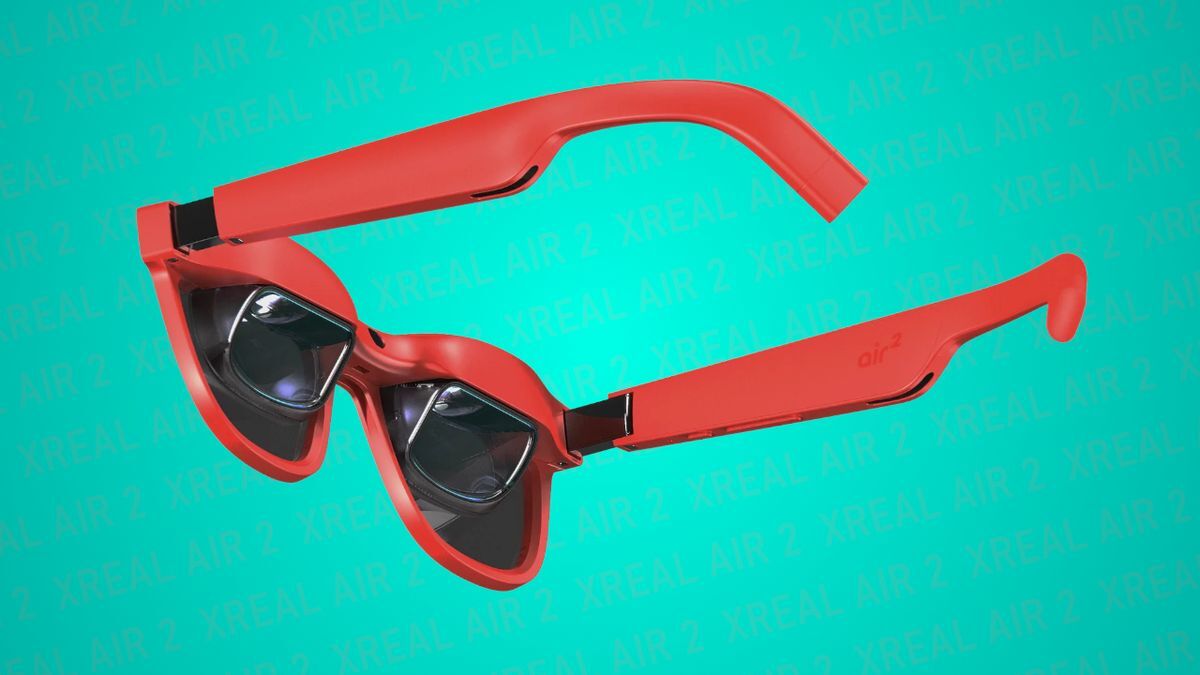Anybody have any experience with these?
I’ve been considering a pair of X-reals out of curiosity but they are right at the tipping point for tech I may not use enough to justify the purchase. Even the price drop in the article still isn’t quite enough.
I have a Gen-1 pair. They are great for traveling. If you game on your phone or steam deck they are also nice to have.
Price point is too high. There are lot of other options out there. I only recommend if you travel a lot or you want to turn your phone into a mini-laptop.
Price used isn’t that high, can score an nreal air for 100 ish on eBay.
for tech I may not use enough
Yeah, that’s kind of my take as well.
If HMDs get to the point where they can replace laptop screens, then manufacturers can just exclude the laptop screen from portable computers and ship an HMD, so that’ll offset some of the cost.
I also don’t care too much about the price if it’s honestly something that I’d use day in and day out. If a manufacturer could give me a display that is equivalent to my existing, traditional monitor but perfectly fills my visual arc and gives me a private view of the screen, I’d be willing to spend $1000 or more; I use my monitor all the time, and in the past, I’ve kept monitors for many years before they get thrown out; they have a lot more longevity than, say, a GPU. My problem is just that, as I mention in my comment, my experience is that HMDs just aren’t a reasonable replacement for displays today, as they come with too many drawbacks. Even if the thing cost nothing, I’d still mainly use my laptop’s display. So at best, an HMD is a device that I’d use occasionally, for special-purpose cases. And that dramatically reduces what I’d be willing to to spend.
There are HMDs that do win in their own niches. VR displays like the Index are better than traditional monitors for playing VR games. The Royole Moon I have is better for watching movies on the go than a laptop screen. AR glasses like like XREALs are the only way to do AR; can’t really do it with a traditional display. There are probably some people out there who really, really want to do these specific things a lot, and for them, that might be worthwhile.
I’d still lug out my Moon if I knew in advance that I was going to be viewing sensitive stuff in a public environment. With video cameras and stuff all over in today’s world, I’m a little uncomfortable having passwords flash on the screen, for example.
But there isn’t any HMD that I’d use in preference to my computer’s screen for general use. And that makes the thing a toy or a specialized tool that I’m not getting use out of most of the time.
1920 x 1080, 120Hz
My desktop and laptop monitors have a higher resolution/refresh rate and don’t require me to have glasses on my face.
But I do like the idea of being able to haul goggles around for use with a laptop, and I tried it with a Royole Moon (unlike VR goggles that spend some of the resolution on peripheral vision to give you an immersive view oriented at games, this sticks the pixels where you’d view a screen) a while back. I didn’t think it was worthwhile compared to a laptop screen. Here was my take:
-
Tend to fog up. Probably not an issue for XREAL glasses; the Moon has shields to try to block out surrounding light that reduce ventilation, and the XREALs don’t have this.
-
Annoying to not be able to see what one is doing occasionally without lifting glasses. Probably not as much of an issue with the XREALs; IIRC, the XREAL glasses are not fully-opaque in display and the highest-end XREAL glasses have a button that flips between three levels of opacity. The flip side of that is that I don’t know to what degree having a partially-transparent display is annoying when trying to make out details on a monitor-replacement display; I’d guess that it is at least somewhat of a factor.
-
Pressure on nose began to get annoying after longer sessions. Probably could do better with better design, lighter weight; I could believe that XREAL glasses do better.
-
Unless glasses are situated just right for any given eye, slightly blurry. This was obnoxious, and I expect a fundamental issue for any binocular HMD, absent the introduction of some kind of motorized mount for the screens to detect and slightly auto-adjust screen distance from eye as one shifts around. Edges also slightly blurry, probably require some kind of fancier optics to solve; users also report this on the XREAL glasses. The Moon was really aimed at movie viewing, for which a bit of blurriness is ignorable, but for reading text, it’s annoying. You may have also experienced this if you’ve used a projector as display; for movie viewing, it doesn’t really need to be in perfect focus, but it’s much-more-noticeable when dealing with text.
-
One more thing to carry with laptop and set up beyond just flipping open a lid, which is somewhat annoying.
-
One more battery-powered device to charge, though one could feed off the laptop’s battery. Could also carry a power station.
-
One more cable floating around.
-
The Moon was intended to do movie playback rather than just act as a monitor, so took a few operations to get it into “monitor mode”. I can believe that other HMDs could work better.
-
The Moon had its own boot time independent of the computer to which it was attached. I can believe that other HMDs could work better.
-
Connection that didn’t like talking to my laptop’s external HDMI display ports and would sometimes lose connection. I can believe that other HMDs would work better.
-
Some screen area not at optimal viewing arc. For me, the visual arc for the Moon was slightly too large and the edges were hard to see. I can believe that a different HMD might do better. I was able to use
xrandrto just not use some of the screen space on Linux, create a smaller, virtual screen; I’d imagine that one could probably use a similar fix with another HMD with a viewing arc that is too large. -
Native resolution on HMDs not as high as that on laptop displays. Not the end of the world, but it’s rare for me to downgrade in resolution.
Some of those are not fundamental to HMDs, but they are things that I would consider on a new HMD, given my past experience.
The integrated headphones on the Moon were pretty good in passive isolation, though they didn’t support ANC. The XREAL glasses have built-in speakers and no cup over the ears to provide isolation. I don’t know how it feels to wear XREAL glasses with another set of headphones, but my guess is that you can’t get the same level of seal and thus sound isolation that circumaural, closed-back headphones can provide, so keep in mind that if you’re wearing an HMD, you may be somewhat committed to their integrated sound system unless you’re going to use earbuds (which for me are uncomfortable for long sessions). Also, when I do use earbuds, I prefer to use “sport” earbuds that have a hook around the ear to keep them secure, and if one were wearing XREAL glasses, that will collide with the glasses trying to do the same.
For these XREAL glasses, which I’ve looked at before, I believe at least one mode involves tracking head movement and creating a “virtual screen” that hovers in space to avoid having the screen move with your head. That sort of thing is necessary for AR functionality; the Moon doesn’t do that, since it doesn’t do AR. I don’t know whether this “floating screen” buys a user much if you’re not using the glasses as an AR device, just as a plain old display; it was billed as reducing disorientation or something. I would point out that if used in that mode, you’re going to spend some resolution on displaying a rendered image of a screen rather than a screen.
I liked the idea. I did not find the reality to be where I’d hoped for; they did not replace my laptop or desktop screen.
I can believe that there are specific limited use cases for which HMDs in their present state could legitimately replace a laptop screen, like where someone has to use a laptop in a public environment, like on an airplane, and is concerned about their seatmate being able to view their screen.
The Moons were intended to watch movies, and I think that a number of the issues (including blurriness and maybe session length if you’re just watching a single movie) aren’t as much of an issue if that’s one’s use case.
The XREALs are aimed at AR. If you want AR…well, you aren’t going to get that with a traditional monitor, so then they’re clearly the way to go. There’s a Threadiverse community at [email protected].
Some type of binocular HMD is necessary if you want to take advantage of stereoscopy for depth perception in VR games (though then you probably want a VR-oriented headset, not XREAL glasses) or 3D movies (though those have kind of died out, as I understand it).
But as a general “monitor replacement”…I think that that’s a tough nut to crack that probably takes more cracking. There’s a reason that laptop manufacturers are shipping computers in laptop form factor and not as a battery-powered mini-PC with an HMD.
One thing I have considered is portable, external monitors. If you have a way to suspend them, you can put them wherever you want relative to your face, which can make a physically-small monitor take up as much of your visual arc as you want (in fact, precisely the amount you want). End of the day, the setup and extra bulk isn’t presently worth it to me for cases where I use a laptop, and I already have my desktop using a VESA-mount monitor mounted on an arm for exactly this reason. But for others, a monitor suspended at just the right place may address some of the use cases where one might get an HMD, if one’s after a physically-smaller, less-power-hungry device that covers a larger portion of one’s visual arc than a traditional monitor.
-
I tried a pair of the Xreal Ones recently. They were pretty decent, though I was a little disappointed by the limited FOV (relative to real life screens, as I gather they’re pretty good for this style of display) the screen pinning was very good, and I really liked the “ultrawide” support (other than the aforementioned fov).
I’m thinking about buying a pair before I have a bunch of long flights later in the year.
I’ve really wanted to do this, in large part because of tech neck. I’d love to have a HMD that has focusable optics so I don’t subconsciously strain my neck to look at my screen.
Anybody have recommendations? I’d love a dumb HMD with hdmi or usb-c video input.
I’ve a pair of Rokid’s and think the technology isn’t there yet. It’s fuzzy around the edges, making reading difficult and a pain. You want to turn your head to get a better look in order to read, but of course it is stuck in place in front of your face so impossible. It is also uncomfortable to wear longer than ten minutes as it causes impressions on your nose bridge. Not worth the price or pain. Maybe in another ten years i’d look into it again.
I tried gaming and watching movies with some early 2000s version of AR glasses (basically just a see trough monitor on your head).
Resolution and input delay was horrible but it was fun for a bit.
I’m waiting for them to be cheaper







